Eliminate thistle from orchard or garden

The caltrop can be a real headache in your garden or orchard.
It is estimated that the seeds of this plant can last between 3 and 7 years dormant, and then grow uncontrollably. Hence the difficulty of eradicating caltrop.
It grows in sandy and rocky places where the soils drain well. It is one of the most widely distributed weeds of its kind. Like other members of the terrestris family, it prefers dry areas in full sun. Vacant land, ranches, railroad tracks, and pastures are great for these plants. And so is your garden or orchard.
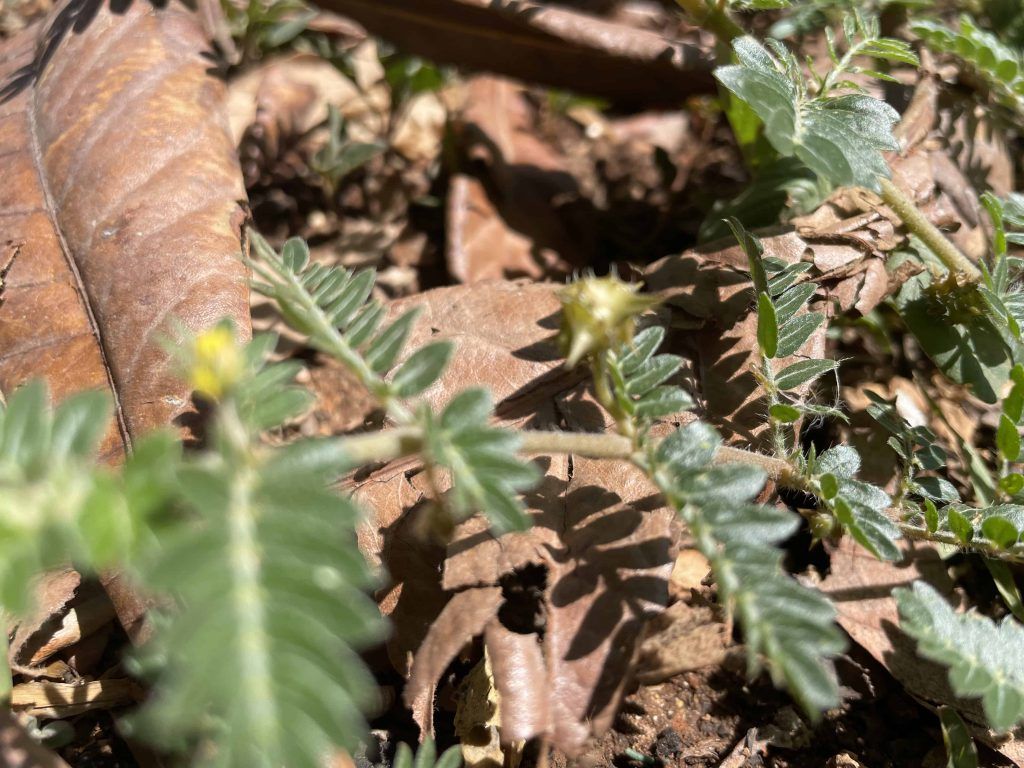
Identifying this weed
When young, it can be difficult to identify without its flower. Since the goat’s head plant has numerous growth phases in its life cycle, we will talk about how to identify it within each of them.
The seedling stage
Tribulus terrestris can resemble other plants in their younger growth period. Plants such as purslane and spotted spurge are sometimes confused with cat’s head, although they are not as detrimental from an ecological point of view. Look for green leaves with gray undersides that have a slightly serrated tip.
Each leaf should have a prominent midrib and be no larger than 1.5 centimeters. The stems radiate from a swirling central taproot . And the entire plant should not be wider than a few centimeters wide.
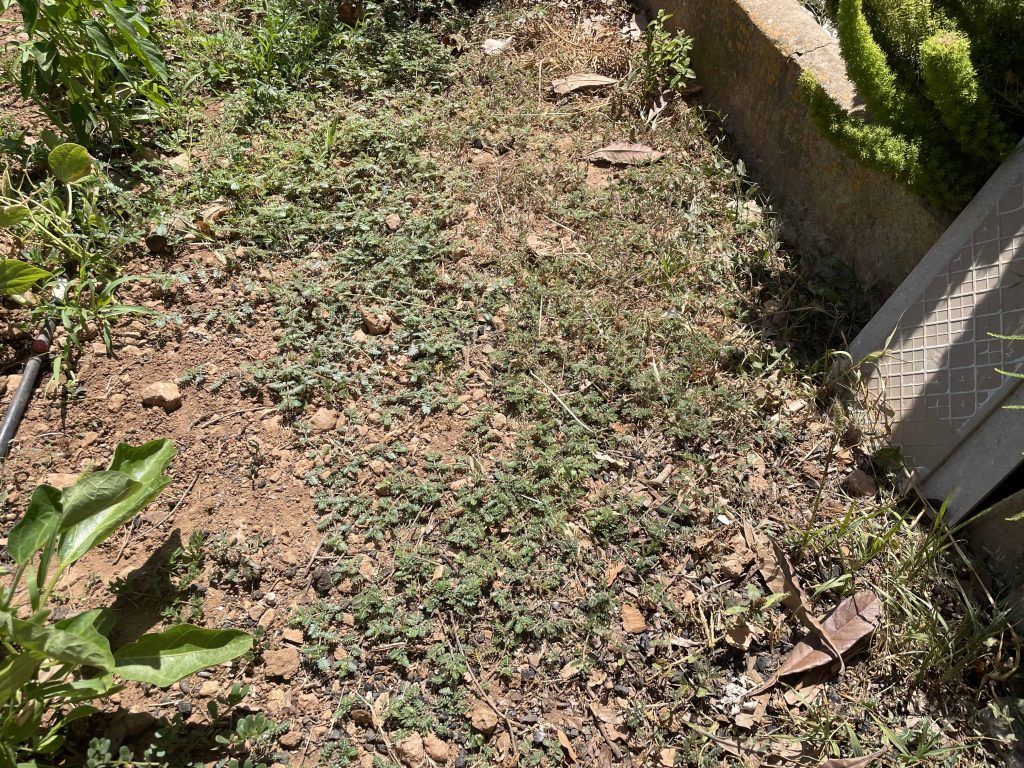
mature plant phase
Most of the time you will find Tribulus terrestris growing prostrate, but among the dense foliage, it will grow upright. Look for its characteristic leaves, but keep in mind that in the mature phase they can stop being green.
Instead, these plants may have reddish-brown leaves. At this stage they will also be covered with hair. Look for small leaves arranged in about seven pairs of leaflets. Stems will occasionally branch up to 1 meter wide on both sides of the underground taproot.
flowering phase
From spring to fall, the bright yellow flower of Tribulus terrestris blooms.
The timing of when the plant typically flowers is largely determined by the climate and geology of the region. Each flower has 5 petals and spans about the same width as the leaves.
If you wonder if the plant you have in your garden or garden is caltrops, check if the flowers open in the morning. That is when the flower blooms.
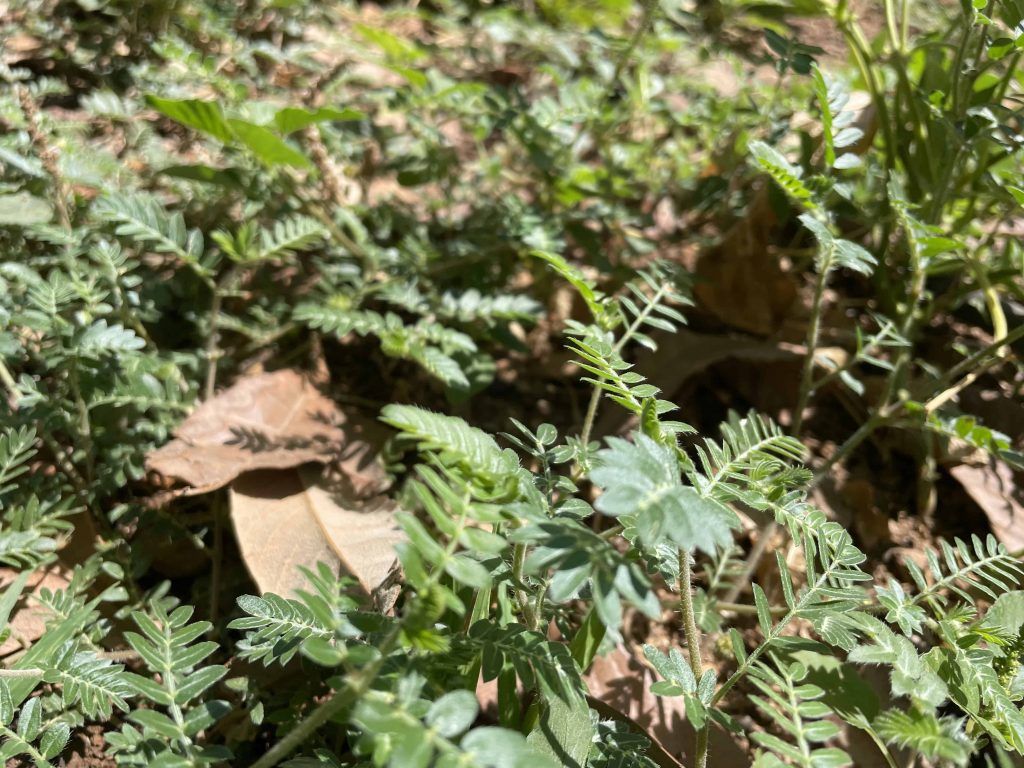
The reproduction of caltrop
The flower of the Tribulus terrestris plant blooms, dies, and the plant forms a devil’s thorn or thorny fruit that has several thorny points that resemble a goat’s head.
When the seed pods fall, they embed themselves in nearby plant debris, bare feet, and fur. They can also snag feet, pierce the soles of shoes, or even puncture bicycle tires.
This is how they spread so easily. They eliminate the ability of other plants (especially native ones) to establish themselves in an ecological niche.
Another way that thistle is so successful has to do with the seed pod’s ability to remain dormant for up to 5 years. This is the main reason why it is widely found all over the world.
Dangers for your pets and other animals
Now that we’ve covered the life cycle of this noxious weed, it’s worth discussing the importance of its removal, and how it relates to pets and other animals.
While the caltrops themselves are detrimental and embed themselves in legs, skin and hooves, the leaves are also a nuisance.
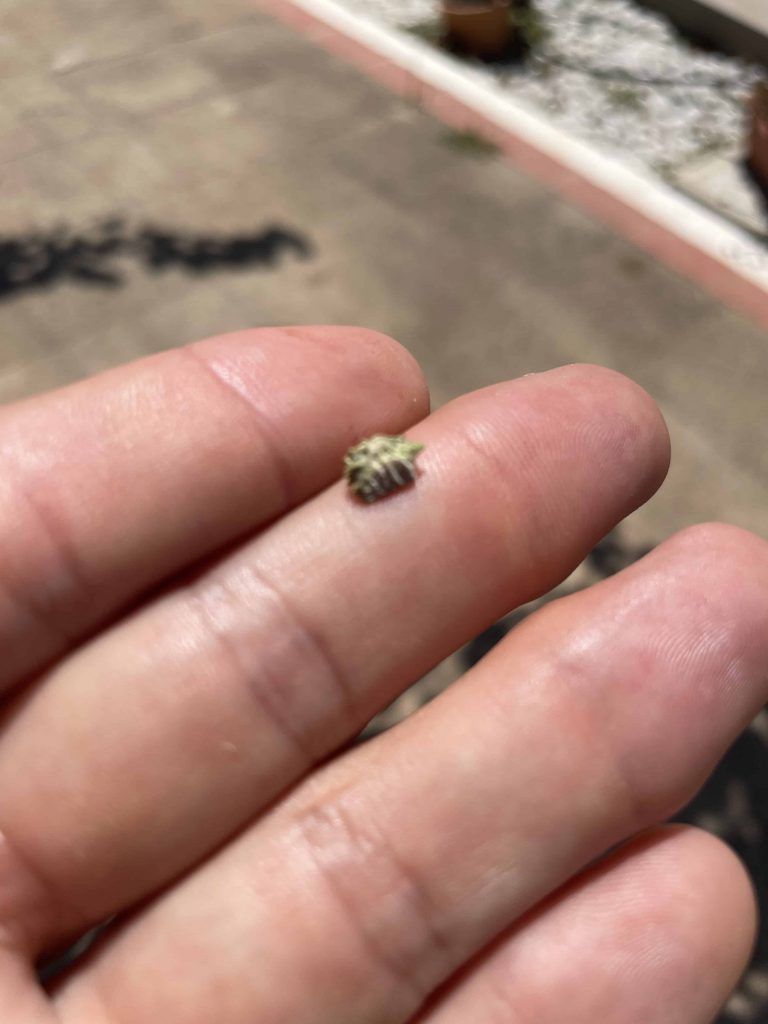
They poison livestock if consumed. Sheep, especially, are exposed to caltrop poisoning. Also, if a burr becomes embedded in the soft tissue, it can easily cause an infection. This could mean a lengthy removal process or a hefty vet bill.
It is also essential that those involved in animal husbandry remove all sharp spines from the skin in which they are embedded, as the remains that remain can also cause infections. This also applies to removing the thorns from your skin.
So this plant is not only terrible for people, their clothes and bicycle wheels, but it can cause serious damage to other living things. That is why effective caltrop control is important.
How to control and eliminate caltrops
Before we talk about ways to control this weed, we must say that treatments with Epsom salts or even iron salts are not effective herbicides against it.
This is because they incidentally kill the foliage, leaving behind the deep taproot, which continues to produce foliage in the mature growth phase.
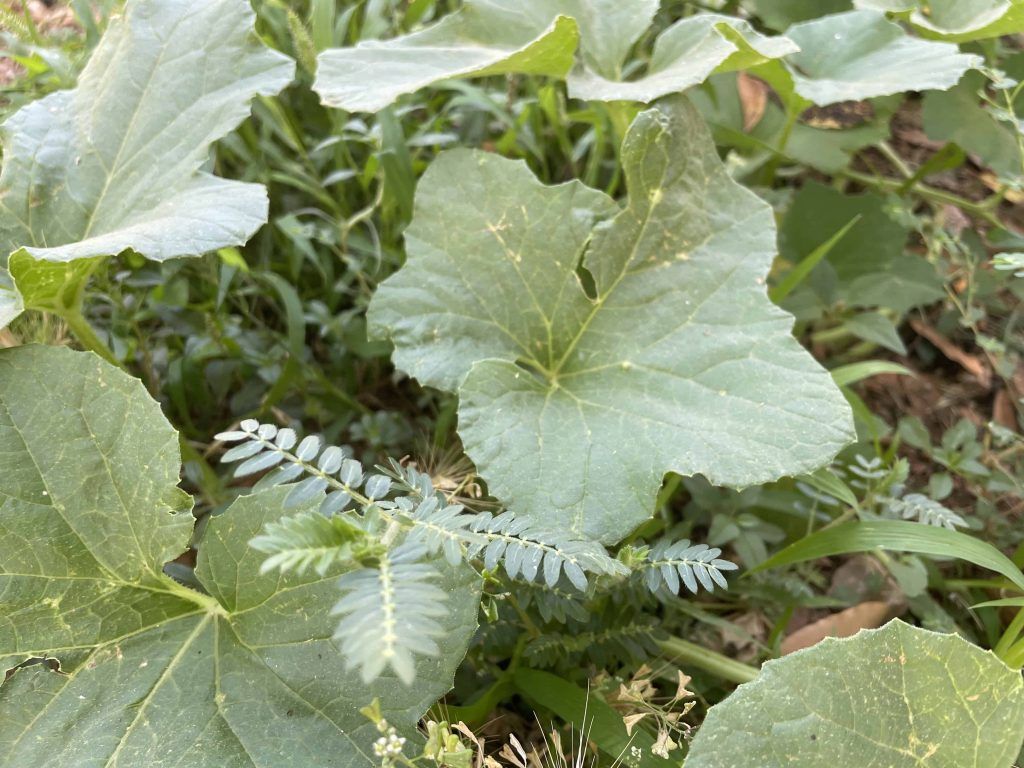
Whether you decide to use natural removal methods or resort to chemical treatment, you should try to use the best techniques. You’ll save yourself from the seed heads puncturing your bike wheels and making you resort to antibiotic cream when they get embedded in your hands and feet.
Actually, having thistles scattered around your garden can be a real nuisance.
Calcine the caltrop
The most effective method to control caltrop weeds?
To the fire! Burn them in the spring when the plants are young or in the summer when all plant parts are present.
Simply burn the plants at the top of the root mass until sufficiently charred. This prevents the foliage from returning and kills it completely.
Watch out for this!Watch out! Before using fire as a herbicide, ask your local authorities if you can do it and what method you should use to be safe. Always avoid this method on dry and windy days.
Use a rug: efficient in the short term
Another interesting and effective method is to drag an old carpet behind a vehicle.
This is great for people who live on large tracts of land, or even a few thousand square meters. As you drag the rug, it will pick up any burrs left on the floor.
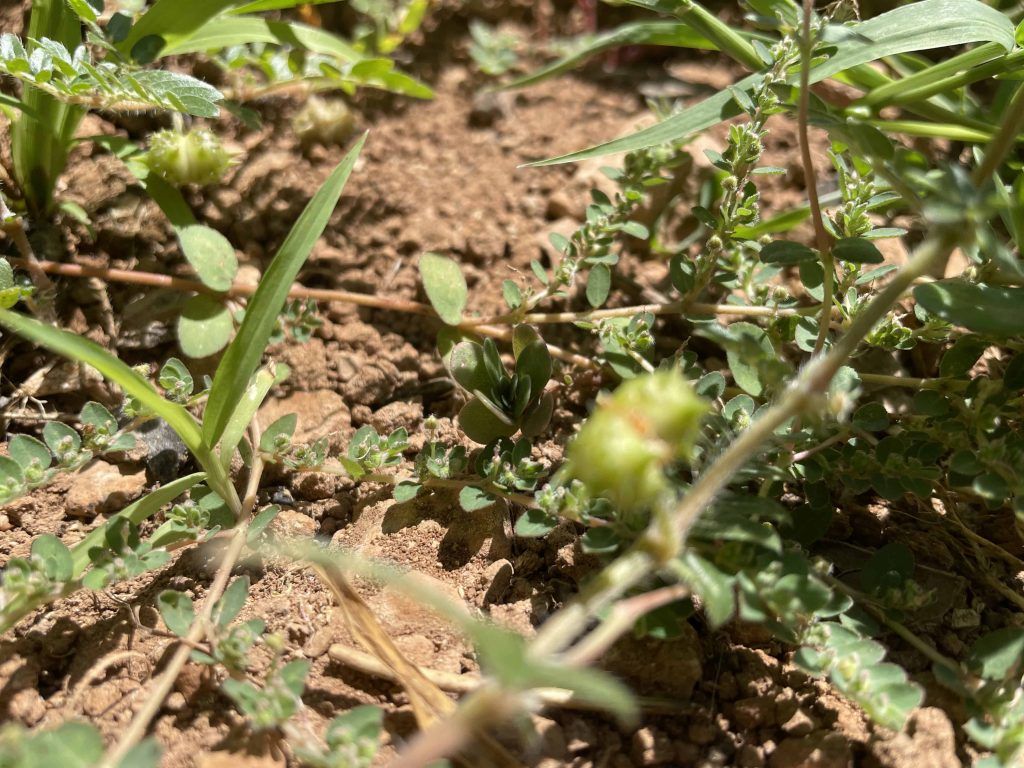
Repeat the process as needed. And keep in mind that you will have to combine this method with others, as it does not remove the plants that are growing, but only the seed pods. But you will save yourself a bike wheel or hurt your foot for a while
Pull out the rennet root
Another method that works very well, but requires a lot of effort, is to manually pull the plant out of the ground, digging up the entire woody taproot.
Slowly pull sideways instead of pulling the plant up, as this will almost certainly break the taproot. Breaking the taproot delays foliage growth until another time, so it is only a temporary solution.
Do it by hand or with a weed starter or puller to save some energy. Then, rake the area to remove any remnants of the seed pods. Use this control method any time outside of winter, when foliage has died but taproots remain.
Boring life weevils
Another way to rid your orchard or garden of caltrops is to release boring vine weevils.
This method is best for those who have a lot of land. If it’s just a few plants, it’s best to pull them out.
The weevils feed on the stems, or on the seeds, depending on the species. Microlarinus lypriformis larvae feed on seeds, while Microlarinus lareynii feeds on stems as adults. You will need both for effective caltrop weed removal.
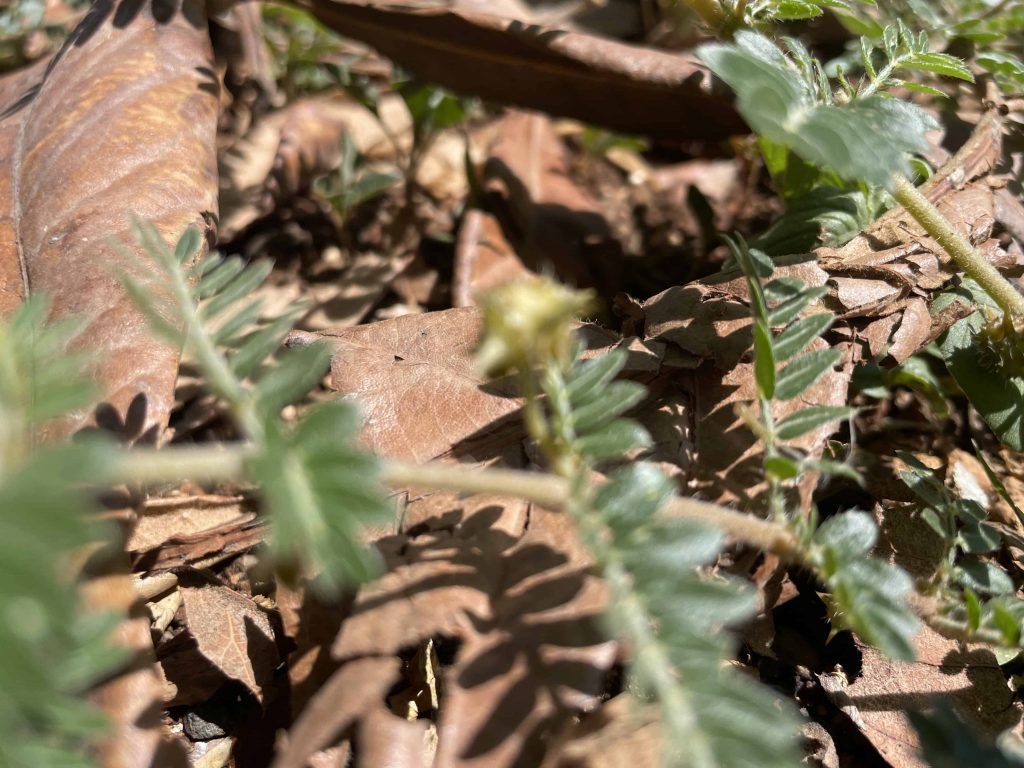
Again, check with your local authorities if they allow you to work with weevils. One drawback to releasing them en masse is that they are not native insects and will not want to destroy their habitat, so they do not completely eliminate the plants you want. They are most effective during the seeding phase.
white vinegar spray
As we have mentioned before, organic herbicides based on iron salts kill the foliage of the goat’s head, but not the taproot. We do not recommend them as an effective control. Instead, use a white vinegar spray with at least 5% acidity on new plants that have not yet gone to seed.
Next, place a tarp over the area where you have removed them to kill the taproot. Horticultural vinegar works in a similar way, but is much stronger, with an acidity of 15%. If you have decided to apply it as a control, wear protective equipment. A ventilation mask and goggles are helpful.
Don’t do it on a windy day!
Watch out for this!You don’t want any of this getting on your skin or in your eyes. Avoid spraying nearby plants with vinegar. They will die if exposed. Use this control in summer, when the plants are fully mature. Rake to remove any remaining seed pods.
chemical herbicide
Two types of chemical control suitable for caltrop removal are glyphosate and oricalin.
Both types of chemical weed killers are broad-spectrum sprays, meaning they will kill any plants they come into contact with. That is why absolute care is necessary in the application with the chemical control of caltrops.
Oryzalin should be applied in late winter and early spring. After spraying the area, cover it with a tarp to prevent evaporation in the sun, and to protect you and your family from contact with the chemicals.
The same goes for glyphosate, except that this chemical herbicide should be applied when the goat’s head is fully grown, in late spring and into fall.
Don’t apply these chemicals on a windy day, as they can kill nearby plants.
Always check the safety labels before using them. Remember to leave adequate time between spraying and planting new plants.
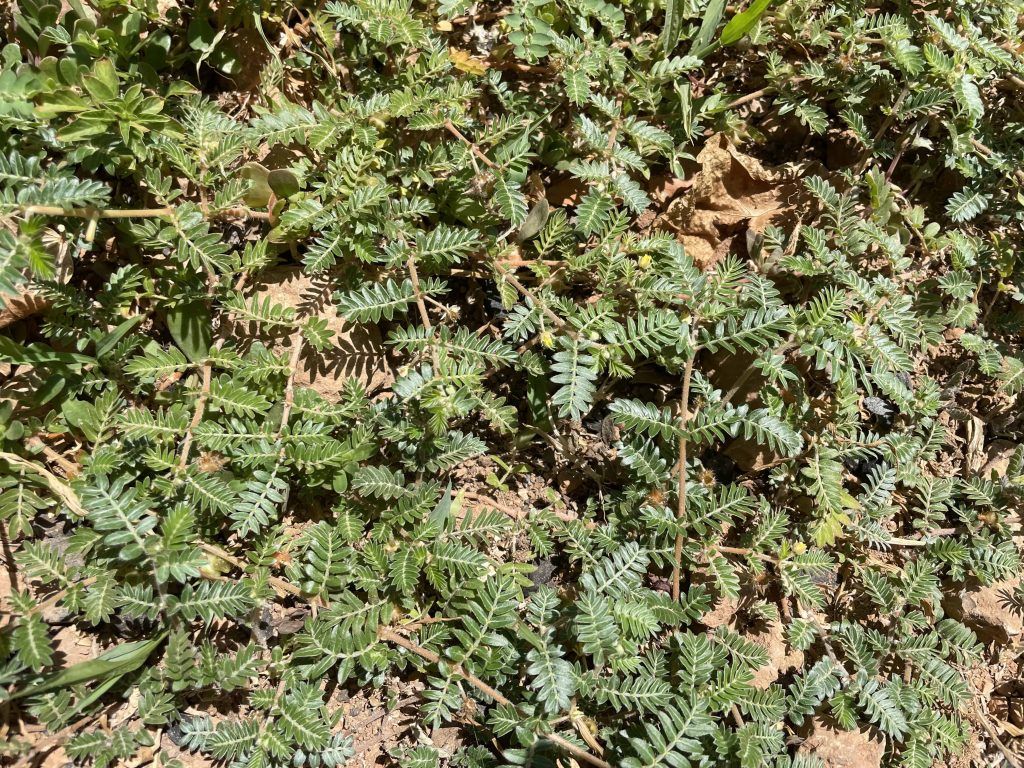
What herbicide kills caltrops?
Chemicals like glyphosate and oryzalin work, as well as strong white vinegar and horticultural vinegar. Check the safety labels on these products before using them.
What is a caltrop thorn?
It’s a pod with a specialized spike that embeds itself into whatever’s around it.
How are goat heads permanently removed?
There are several ways to do it, both manual and chemical. See the control section above.
Do goats eat caltrops?
Yes. Cattle are attracted to this plant. However, goats are less susceptible to poisoning, unlike their relative, the sheep.
Do chickens, geese and other birds eat thistles?
In principle and in our experience, neither chickens, geese, ducks or other birds eat this weed.

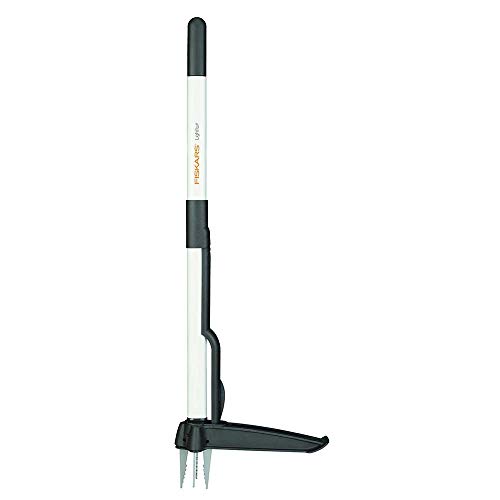
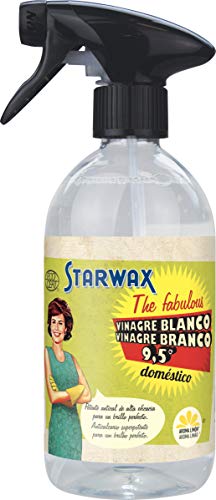

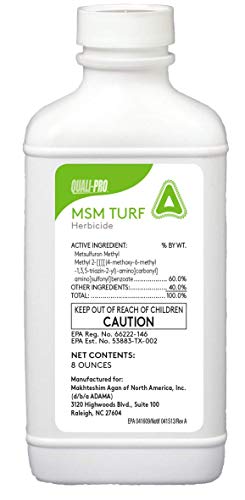
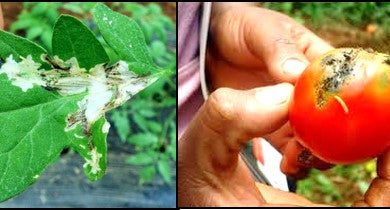
![Photo of Cut Trees: [Methods and Guide to Cut Down a Tree]](https://www.complete-gardening.com/wp-content/uploads/2022/08/cut-trees-methods-and-guide-to-cut-down-a-tree-390x220.jpg)
![Photo of Prune Ficus Benjamina: [Importance, Time, Tools, Considerations and Steps]](https://www.complete-gardening.com/wp-content/uploads/2022/08/prune-ficus-benjamina-importance-time-tools-considerations-and-steps-390x220.jpg)
![Photo of Marula Tree: [Planting, Care, Harvest, Irrigation and Characteristics]](https://www.complete-gardening.com/wp-content/uploads/2021/06/Cuidados-y-plantación-de-Marula-390x220.jpg)